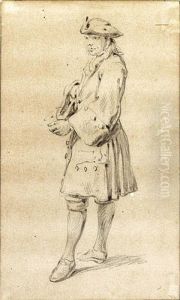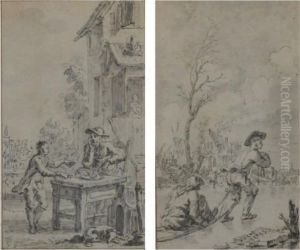Simon Fokke Paintings
Simon Fokke was born in Amsterdam, the Netherlands, in the year 1712. He emerged as a significant figure in the Dutch art scene of the 18th century, particularly renowned for his skills in engraving and drawing. Fokke's work is a testament to the rich cultural and artistic heritage of the Netherlands during a period that bridged the late Baroque and early Enlightenment eras. His contributions to art history are deeply rooted in the traditions of Dutch craftsmanship and the period's evolving tastes in art and illustration.
Fokke was apprenticed at a young age, which was a common practice for aspiring artists during his time. He learned the intricacies of engraving under the tutelage of skilled masters, which laid the groundwork for his future career. Over the years, he developed a distinctive style that combined meticulous detail with expressive compositions, making his works sought after by publishers and collectors alike. He became particularly well-known for his book illustrations, which brought to life the texts of contemporary and historical works with vivid imagery and narrative depth.
Throughout his career, Simon Fokke worked on a wide range of subjects, including historical scenes, portraits, and landscapes. His engravings not only served as decorations but also as educational tools, helping to disseminate knowledge and ideas. Fokke's ability to capture the essence of a story or a character in his illustrations made him a pivotal figure in the development of visual storytelling in the Netherlands.
Fokke's contributions extended beyond his own artworks. He was part of a network of artists, scholars, and publishers in Amsterdam, contributing to the city's status as a cultural hub in Europe. Through his collaborations and mentorship of younger artists, he played a role in shaping the artistic landscape of his time.
Simon Fokke passed away in 1784, leaving behind a legacy that has endured in the world of art history. His works continue to be studied and admired for their technical skill and historical significance, offering insights into the cultural and social dynamics of the 18th-century Netherlands. Fokke's life and art embody the spirit of an era that valued the power of visual representation and the role of the artist as a chronicler of contemporary life and history.




